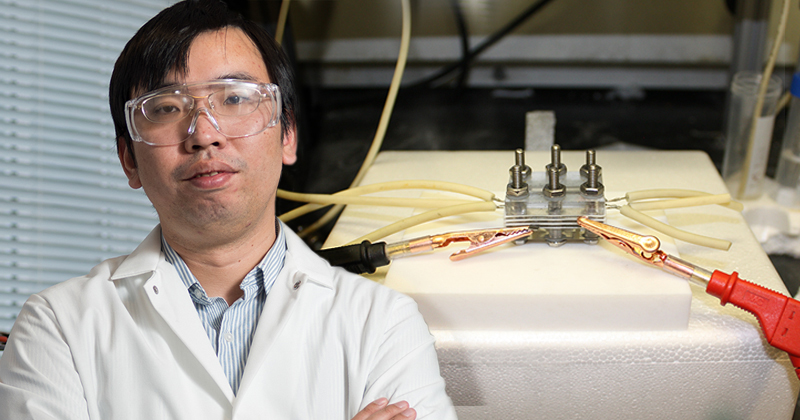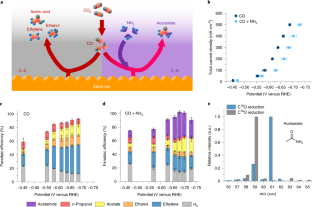2019/8/23 アメリカ合衆国デラウェア大学 (UD)

・ UD、カリフォルニア工科大学(Caltech)、中国・南京大学および台湾・東呉大学が、CO の電気化学的還元反応で炭素-窒素(CN)結合を形成する技術を初めて開発。製薬をはじめとする様々な産業で有用な高価値の化学物質であるアミドの生成が期待できる。
・ 過去の研究による CO2 を CO に変換する特殊な銀触媒の開発に引き続き、CO を燃料や薬品等の製造に有用なマルチカーボン製品にアップグレードするための技術開発を目指した。
・ CO2 の電気化学的な変換システムで得られる化学物質は、エチレン、エタノール、プロパノール及びアセテートの 4 種類の主要な製品に限られている。このシステムのもつ可能性の鍵を握る物質は窒素。
・ 今回、CO2 と CO の代わりに、CO と窒素を含有するアンモニアをフローリアクタに投入。電解質との界面にて銅触媒が窒素源と相互作用することで CN 結合をが形成された。同プロセスでは、これまで生成が不可能だったアミド等の化学物質を合成できる。医薬品のほとんどは窒素を含んでおり、同プロセスはシンプルな炭素種と窒素種の利用で窒素を含む大型分子のユニークな生成方法を提供する。
・ このような CN 結合を形成する新手法は、エチレンやエタノール生成に確立されたメカニズムより派生したものであり、CN 以外の結合の可能性を示唆する。今回、触媒表面での CN 結合の形成について多くを学習した結果、このような化学反応を促進するより優れた触媒の設計において重要な見識が得られたと考える。
URL: https://www.udel.edu/udaily/2019/august/feng-jiao-carbon-nitrogen-bonds-catalysis/
(関連情報)
Nature Chemistry 掲載論文(アブストラクトのみ:全文は有料)
Formation of carbon–nitrogen bonds in carbon monoxide electrolysis
URL: https://www.nature.com/articles/s41557-019-0312-z
<NEDO海外技術情報より>
Abstract
The electroreduction of CO2 is a promising technology for carbon utilization. Although electrolysis of CO2 or CO2-derived CO can generate important industrial multicarbon feedstocks such as ethylene, ethanol, n-propanol and acetate, most efforts have been devoted to promoting C–C bond formation. Here, we demonstrate that C–N bonds can be formed through co-electrolysis of CO and NH3 with acetamide selectivity of nearly 40% at industrially relevant reaction rates. Full-solvent quantum mechanical calculations show that acetamide forms through nucleophilic addition of NH3 to a surface-bound ketene intermediate, a step that is in competition with OH– addition, which leads to acetate. The C–N formation mechanism was successfully extended to a series of amide products through amine nucleophilic attack on the ketene intermediate. This strategy enables us to form carbon–heteroatom bonds through the electroreduction of CO, expanding the scope of products available from CO2 reduction.




